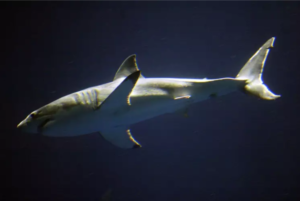Great white sharks (Carcharodon carcharias) have long captivated the public’s imagination, yet attempts to house them in aquariums have consistently ended in failure. The inability to keep these apex predators in captivity stems from a combination of their unique biological needs, space requirements, health risks, and ethical considerations.
Biological and Behavioral Needs
Great white sharks are highly migratory, traversing vast oceanic expanses. In the wild, they can cover hundreds of miles in a single day, a behavior driven by their need to hunt and reproduce. This constant movement is facilitated by their physiology; they rely on ram ventilation, requiring continuous swimming to pass water over their gills for oxygen exchange. Confinement in a tank restricts this essential movement, leading to stress and compromised health. Moreover, their predatory nature involves complex hunting strategies, including breaching and rapid acceleration, behaviors that cannot be replicated in captivity. Deprived of these natural activities, captive great whites often exhibit signs of depression, such as lethargy and loss of appetite. Instances have been recorded where confined sharks repeatedly collided with tank walls, causing injury. For example, a great white shark held at the Monterey Bay Aquarium in 2004 had to be released after 44 days due to declining health and feeding issues. 
Size and Space Constraints
Adult great white sharks can reach lengths of up to 20 feet (6 meters) and weigh over 2,000 pounds (900 kilograms). Accommodating such large, active predators requires an expansive environment that no aquarium can realistically provide. The largest aquarium tanks hold several million gallons of water, yet even these are insufficient for a species accustomed to the open ocean’s boundless space. The physical limitations of tanks prevent sharks from swimming at their natural speeds or engaging in typical behaviors, leading to physical and psychological stress. Additionally, maintaining water quality in such large enclosures is challenging; great whites are sensitive to changes in water temperature, salinity, and chemistry, and even minor deviations can have detrimental effects on their health.
Feeding Challenges
In the wild, great white sharks have a diverse diet, including fish, seals, and other marine mammals. Their hunting involves complex behaviors and the consumption of large prey items. Replicating this diet in captivity poses significant challenges. Captive sharks often refuse to eat, leading to rapid health decline. The stress of confinement further exacerbates feeding issues, as stressed sharks are less likely to accept food. Moreover, the logistics of providing live prey of appropriate size and type are impractical and raise ethical concerns. Attempts to feed captive great whites with dead prey have also been unsuccessful, as these sharks are adapted to hunting live animals and may not recognize non-living food as sustenance.
Ethical and Conservation Considerations
The ethical implications of keeping great white sharks in captivity are profound. The stress and health issues observed in captive individuals raise questions about the humanity of such practices. From a conservation standpoint, removing apex predators from their natural habitats can disrupt local ecosystems. Great white sharks play a crucial role in maintaining the balance of marine environments by controlling the populations of their prey. Their removal can lead to unintended ecological consequences, such as the overpopulation of certain species and the decline of others. Furthermore, the high mortality rate of captive great whites undermines conservation efforts, as these individuals do not survive to reproduce and contribute to the species’ genetic diversity.
Historical Attempts and Failures
Historically, several aquariums have attempted to house great white sharks, but none have succeeded long-term. The Monterey Bay Aquarium’s 2004 effort is among the most notable; despite providing a million-gallon tank and specialized care, the shark’s health deteriorated, necessitating its release after 44 days. Similar attempts elsewhere have resulted in sharks refusing to eat, colliding with tank walls, and exhibiting abnormal behaviors, leading to premature death or release. These repeated failures highlight the challenges and ethical dilemmas associated with keeping great white sharks in captivity.
In conclusion, the tragic reality is that great white sharks’ complex biological needs, space requirements, feeding behaviors, and the ethical considerations of their confinement make it unfeasible to keep them in captivity. Efforts to do so have consistently resulted in harm to the sharks, underscoring the importance of respecting and preserving these magnificent creatures in their natural oceanic habitats.


